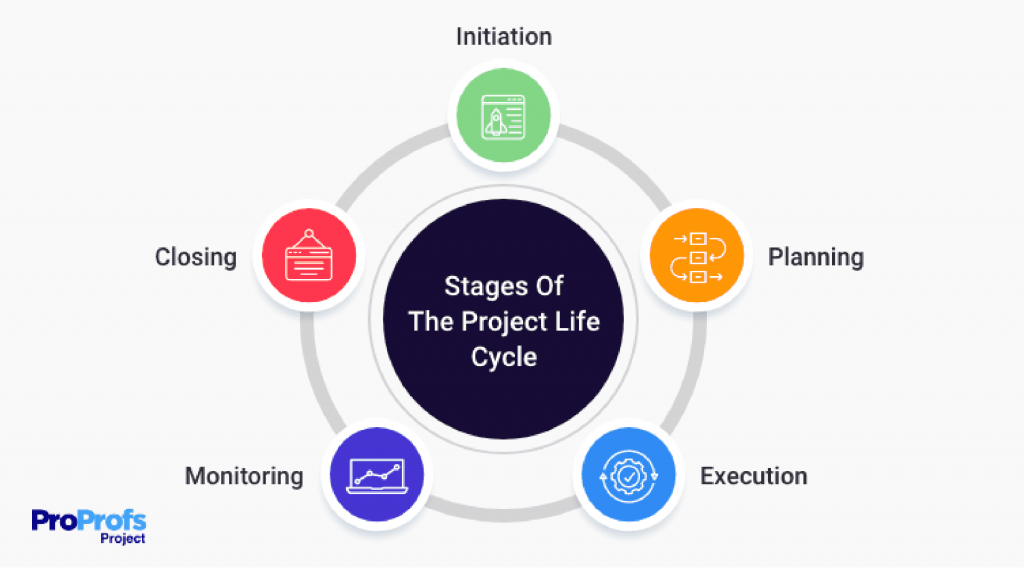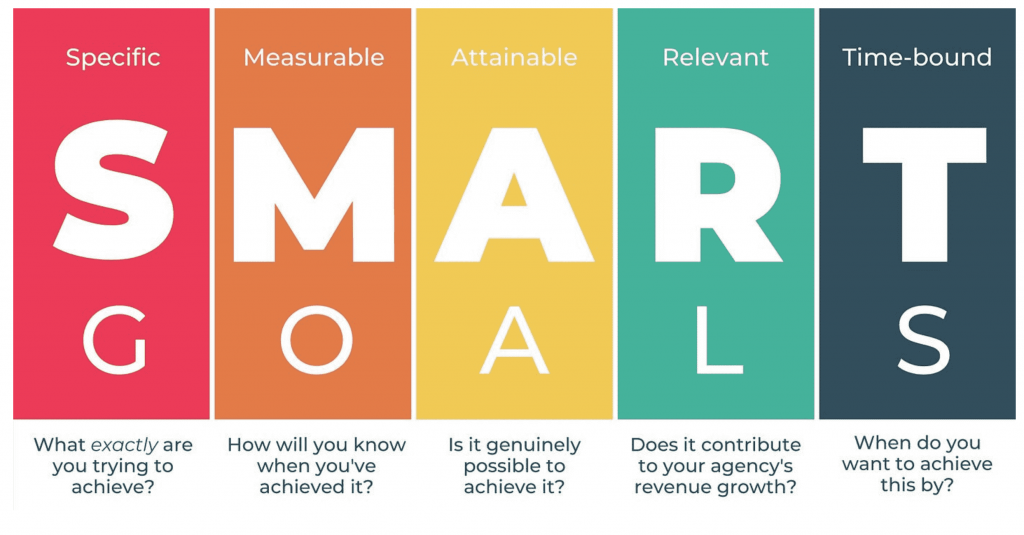Begin with the end in mind.” – Stephen Covey, American author and educator.
This statement has a direct link to project initiation. Want to know how?
You see when you don’t lay the foundation of a project in the right way from the start, you expect to see roadblocks all along the way. And there you have all sorts of questions like –
- Why is the project still far from completion even after a day of the deadline?
- Do we need to assign extra manpower to wrap it ASAP?
- Why are we moving away from the prefixed budget?
- How should we deal with the compliance issues?
Well, these questions are more likely to appear if the project wasn’t initiated by keeping the end in mind. And if these are what you deal with mostly, then this blog is likely to help you a lot.
Project Initiation Steps: Explained in Simple Words
Step 1: Identify the Need & Craft a Business Case
Step 3: Define Project Scope & Goals
Step 4: Conduct a Feasibility Study
Step 5: Develop a Project Charter
Step 6: Choose a Project Management Tool
Step 7: Identify Risks & Develop Mitigation Strategies
Step 8: Obtain Project Approval
Why Is the Project Initiation Phase so Crucial?
Project Initiation vs. Project Planning: Are They the Same?
Kickstart Your Projects With ProProfs Project
What Is Project Initiation?
The project management initiation phase is the first step of a project’s lifecycle. It’s the moment when a concept is transformed into a structured format with clear objectives and defined parameters.

But what does this mean in practical terms?
It involves defining the project at a high level, securing necessary approvals, and aligning stakeholders’ expectations. This phase is where you lay the groundwork, define the project’s purpose, and assess its feasibility.
This is also the phase where you should ask/address the following questions –
- What are we aiming to achieve?
- Why is this project necessary?
- Who will it impact or benefit?
- How will we approach its execution?
The answers to these questions form the project’s charter – a document that serves as both a declaration of intent and a roadmap for the journey ahead.
Suggested post: A Guide to Project Lifecycle: What Is, the 5 Phases, Benefits, and More
Project Initiation Steps: Explained in Simple Words
To explain the steps required for the project initiation phase, I consulted with people who would be a right fit (team leaders, project managers, team managers) to get practical suggestions.
And here is what I heard from them to which I have also added my personal insights to make it more relatable for you. Let’s get started.
Step 1: Identify the Need & Craft a Business Case
This initial step is where you identify a need, problem, or opportunity that the project will address. Much like how an artist first conceives a vision before touching brush to canvas, this stage involves brainstorming, discussions, and the preliminary shaping of the project’s purpose.
It’s a time for asking questions like – “What problem are we solving?” or “What opportunity are we seizing?” – ensuring the project has a clear rationale from the outset.
All you need to do is translate this need into a compelling business case, highlighting the project’s benefits (increased revenue, improved efficiency), costs, and potential risks.
Step 2: Assemble the A-Team
No project thrives in a silo. In the project management initiation process, you need to identify the key players – the project manager, subject matter experts, team members, etc. (those impacted by the project).
So, basically, this step involves identifying all stakeholders—those with a vested interest in the project’s outcome. Stakeholders can include clients, project team members, investors, and others whose interests may be affected by the project.
It’s like knowing the audience at a play, where each has a different perspective and expectations. Consider their skills, experience, and availability. You need to assemble a robust team that will hail the project to its victory.
Step 3: Define Project Scope & Goals
Defining the preliminary scope sets the boundaries for what the project will and will not cover. You need to define clear, specific, and measurable objectives. This stage sets the direction and purpose of the project, outlining what it intends to achieve.
So, what is it like in the real world?
Well, I’d say it’s much like setting destinations on a map for a road trip. Objectives should align with the broader organizational goals and be SMART (Specific, Measurable, Achievable, Relevant, and Time-bound).

(Image Source: Medium)
Related post: Project Scope: How to Define & Manage It Like a Pro
Step 4: Conduct a Feasibility Study
Will the project pay off? Project managers often have this question.
Now, although this may seem redundant had the the project execution been already started, it’s not when you’re in the project initiation phase.
And that is solely because not every brilliant idea translates into a viable project.
The goal is to ensure that the project is not just a castle in the sky but a feasible attempt that can be sustained within the given constraints. So, to wrap up what you need to do in this phase, here are some bullet points –
- Assess the practicality of your vision
- Consider factors like budget constraints, technical feasibility, and potential roadblocks
- Analyze and study to evaluate the project’s potential for success
A feasibility study ensures you’re not setting sail for a mythical island – your destination is well within reach.
Step 5: Develop a Project Charter
Think of the project charter as a formal green light for the project.
It’s a document that outlines the project’s purpose, objectives, scope, and initial resources. This project initiation document formally authorizes the project, outlining its objectives, scope, key stakeholders, and the roles and responsibilities of the project team.
It serves as a contract between the project sponsor and the team, marking the official start of the project. I consider it a critical reference point that guides decision-making and governance throughout the project’s lifecycle.
Want to know in more detail? Read this blog –
An Ultimate Guide on Project Charter [With Examples]
Step 6: Choose a Project Management Tool
Needless to say, project management is not an easy venture, no matter how experienced you are. And without a reliable software solution, it’s hard to keep a tab on tasks, responsibilities, project progress, and deadlines with just a spreadsheet in hand.
What is Project Management? Learn How to Start Managing Projects Online
So, how do you choose a platform? How do you know it’s going to serve your project requirements? Is there a tool that can be called the best software?
Well, I understand the journey to selecting the right software is not a quick-shot one. And frankly, there is no such thing as the ‘best’ software. It all boils down to which tool solves your problem and fits your budget.
Regardless, as someone who uses multiple project management software options, I can list some of the key project management features that you should consider. They are:
- An easy-to-understand and clutter-free user interface to ensure your team doesn’t need weeks to get used to the learning curve
- The software should have a robust task management system where you can assign tasks, prioritize them, set dependencies, etc.
- Multiple project progress views, such as Gantt chart, Kanban board, calendar, list, etc., for easy tracking
- The software should have a project initiation document template to help you get started
- A resource planning tool to effortlessly manage project resources and avoid unwanted roadblocks
- Automation support to free yourself from repetitive tasks like sending project updates, deadline reminders, and other notifications
- The software should also have built-in team collaboration and communication features to ensure you don’t need to spend on additional apps
People also read: 20 Best Project Management Software for Sure-Shot Project Success
Step 7: Identify Risks & Develop Mitigation Strategies
No project is without risks, and assuming everything will go according to plan is a recipe for surprises… and, sometimes, disasters.
Risk assessment is about proactively identifying what might go wrong and devising strategies to mitigate these risks. It is also about acknowledging constraints that could impact the project.
Now, here, what I’d suggest is that you get a risk management tool. Such a tool will make this whole process of assessing, evaluating, and mitigating risks much more manageable.
Read to know more: Project Risk Assessment: All You Need to Know About
Step 8: Obtain Project Approval
The last step of the project initiation is getting the seal of approval from key stakeholders. It’s also a good idea to include the team and sponsors in the kick-off meeting to discuss the project’s objectives, expectations, and initial plans.
Present your business case and project charter, clearly outlining the project’s value proposition and addressing potential concerns. This meeting is crucial for building team cohesion, aligning everyone’s understanding, and ensuring no one is clueless about what’s on the list.
Why Is the Project Initiation Phase so Crucial?
Asking someone why the project management initiation phase is so crucial, you’ll probably hear generic answers like –
Skipping project initiation is akin to building a house on a foundation of sand, or it’s like constructing a bridge without a blueprint, and so on. But, all these make no definite sense, I get it. And if you’re like me, you’ll probably be saying –
I’ve walked some extra steps talking with experienced project managers to find out what are some of the solid reasons. And here’s what I found –
- Increased Project Success Rates: You can expect a well-defined project with clear goals and a competent team to have an increased chance of achieving its objectives.
- Improved Resource Allocation: By identifying resource needs upfront, you avoid scrambling later and ensure everyone’s time is utilized effectively.
- Enhanced Stakeholder Buy-in: A strong business case and clear communication plan garner stakeholder support.
- Reduced Risk of Project Failure: Identifying potential roadblocks early allows for proactive mitigation strategies.
- Strategic Alignment: The initiation phase ensures the project aligns with the organization’s strategic objectives, contributing to the overall business strategy and goals.
Project Initiation vs. Project Planning: Are They the Same?
Understanding the distinction between project initiation and planning is pivotal for any project manager. While both are integral phases of the project management lifecycle, they serve different purposes.
In the simplest terms –
- Project initiation focuses on why you’re doing the project and what needs to be done.
- Project planning delves deeper into how you’ll achieve goals, creating detailed schedules, resource allocation plans, task dependencies, etc.
Want some more information about the two? I’ll list some of the distinguishing points of the two terms to help you understand better.
- Project Initiation
- It is the conception phase.
- It’s where the project idea is born and begins to take shape.
- This phase is characterized by defining the project at a high level, establishing its goals, and identifying its scope and stakeholders.
- It’s about answering the fundamental questions of what the project will achieve and who will be involved.
- The output of this phase is typically the project charter – the foundational document for all future project activities.
- Project Planning
- It is the phase where you organize the project.
- Here, you create a detailed roadmap for achieving the project’s goals.
- It involves breaking down the project into subtasks, scheduling these tasks, allocating resources, etc.
- Risk assessment, budgeting, and setting up communication plans are also crucial components of this phase.
- The result is a comprehensive plan that outlines how the project will be executed, monitored, and controlled.
To conclude, you cannot skip any of the two phases, as they are interdependent.
Want to know more about project planning? Read this blog –
A Guide on Project Planning: The Steps, Benefits, Examples, & More
Kickstart Your Projects With ProProfs Project
When you think of a project, the first thing that comes to mind is teamwork, executing tasks, meeting deadlines, etc. But little do we know that there is a lot on the plate even before you start working on the project.
And that includes strategizing, planning, and assembling a robust team to lead the project to success. Oh, and you will also need a reliable project management platform to simplify all these.
I’ve been using ProProfs Project for quite some time now, and I feel it ticks most of the boxes for me. A software solution like it is likely to help you glide your way through the project initiation phase.
But no matter which software you choose, always remember to test its free plan or trial to see how it works. For example, ProProfs offers a freemium plan for small teams. Test it now to see if it meets your requirements.
FREE. All Features. FOREVER!
Try our Forever FREE account with all premium features!





